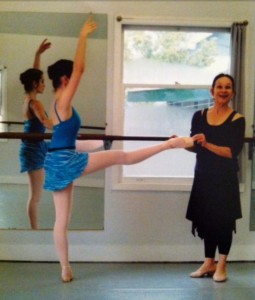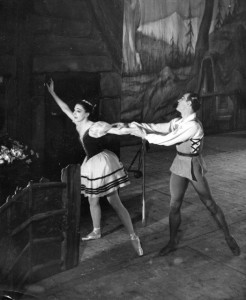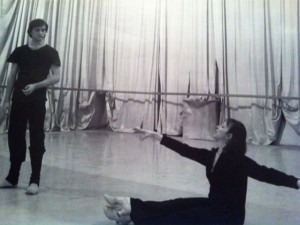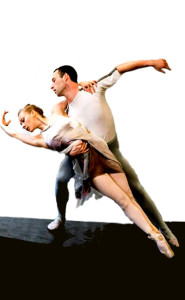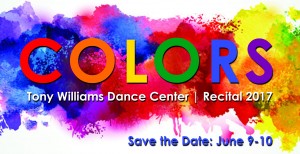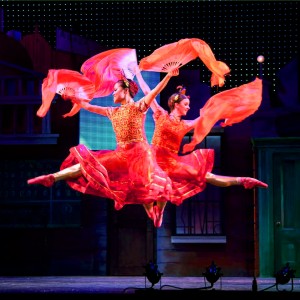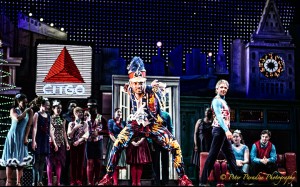Join us for our 2020-2021 Season!
Check our Upcoming Productions Page for more up-to-date information! In May 2015, Tony Williams introduced his own ballet company to the world by with a special intimate performance in Jamaica Plain. In September 2018 Tony Williams introduced a larger iteration of this company, City Ballet of Boston.
Production dates are:
Fall 2018 Show: October 25-28, 2018 at the Virginia Wimberly Theatre at Calderwood Pavillion in the South End of Boston
Urban Nutcracker: December 20-30, 2018 at the Boch Center Shubert Theatre in Boston’s historic theatre district
Spring 2019 Show: April 25-28, 2019 at the Strand Theater in Dorchester, Ma
—
Green Street Studios is thrilled to introduce a new showcase series, GSS Concerts. Several times per year, GSS will gather area artists who represent the diversity and talent in our arts scene through “Genre Specific Shared Concerts.” Our goal is to highlight what area artists are doing in these genres and introduce existing audiences to new and exciting artists. By sharing and engaging audiences for that form, we will open doors to new patrons and facilitate dialogues that explore what we know and understand and what we do not. All questions welcome!
Our first showcase will take place April 21-23 to Investigate Ballet!Description
Dates: April 21 @ 8pm; April 22 @ 8pm; April 23 @ 6pm
Location: Green Street Studios, 185 Green Street, Cambridge
More information: http://www.
Tickets: https://www.
Artists and Companies: Kevin Jenkins, Boston Ballet II, Tony Williams Ballet, David Sun, Tai Jimenez, Island Moving Company
—
Tony Williams Ballet Company presents…. Life: In Color, an original rock ballet by Tony Williams.
LIFE: IN COLORan original rock ballet by Tony Williams |
|
Dear Dance Lovers,
Politics, race, hope & human nature converge in a vibrant ballet journey of emotion, set against a background of rock & jazz tracks. of the past 60 years.
Take a journey through the soundtrack of America’s past while we express a Life: In Color presented by Tony Williams Ballet Co., home of the Urban Nutcracker. Show dates areMay 25 + 26 at the Oberon Theater in Harvard Sq.
Rock on! -Tony
Tickets on sale April 1st. Tickets Link: www.cluboberon.com
Please Save the Date!
|
The Long Nourishing Exacting Touch of Mr. Balanchine
“This is a living art. We must pass it on.”
Ballet was already an epidemic of its own. By the early 20th century, balletomania had spread to all layers of western society. Polish prodigy Vaslav Nijinsky drew crowds of delirious fans. When she saw him dance, 21-year old Romola de Pulszky broke off her engagement to a Hungarian baron and followed Nijinski on his tour to South America. In Russia, three Grand Dukes, including the future Tsar Nicholas II, courted the prima-ballerina Mathilde Kshessinska. And Anna Pavlova, a humble daughter of a laundress, reigned supreme on stages around the world.
André Eglevsky recovered from his illness, but never from ballet. He attended Madame Kshessinska’s school in Paris. At age 14, he joined a professional company, Ballets Russes De Monte Carlo. Within six months he was dancing the lead parts. One of his tours brought him to America, where he would be called “the greatest dancer of his generation.” Ballets Russes had begun in 1909 as an effort to promote Russian ballet abroad. The original troupe starred Nijinsky, Pavlova, Kshessinska and other crown jewels of the Imperial Ballet. The company also employed the most visionary artists of its time.
Enrico Cecchetti taught his technique. Fokine, Massine, and Balanchine choreographed the ballets. Stravinsky, Prokofiev, Ravel and Debussy wrote the music. Bakst, Roerich, Benois, Chanel, Picasso and Dali designed sets and costumes. It was a constellation of the arts such as the world had never seen. Yet the times were not kind to the artist—nor to the human species as a whole. Ballets Russes alternately destroyed lives and launched careers:
“After Nijinsky had lost his mind, they put him away and gave all of his roles to my father. Fokine personally taught him the steps.”
Another spectacular offshoot of Ballets Russes was George Balanchine. In 1930s Balanchine opened his own ballet school and a performing company. Long before Ballets Russes de Monte Carlo finally folded in 1968, many of its dancers and staff had migrated to New York City to work for Balanchine. André Eglevsky among them.
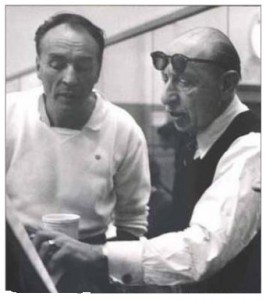
Balanchine and Stravinsky circa 1953
Today, the works Balanchine had bequeathed to her father are in Marina’s care. Which is how it happened that one Sunday afternoon she showed up at Tony Williams dance studios in Jamaica Plain, Massachusetts.
Tony and Marina had met before:
“When I arrived in Royal Winnipeg Ballet with my husband, Salvatore Aiello, Tony was there. He danced a lot with his partner at the time, Bonnie Wyckoff, and my husband and I danced a lot together. So we were two couples one could say competing, but I never felt this way. Bonnie and Tony were great dancers and artists and instead of competing I felt a great admiration for them, I was excited to learn from them and I looked forward to dancing with Tony myself, which I did on occasion. It was always a great joy to dance with Tony.”
After the Royal Winnipeg, Tony and Marina went their separate ways. Now she’s back in his life to help stage one of Balanchine’s works—Glinka pas-des-trois. The ballet premiered in 1955 with André Eglevsky, Allegra Kent, and Melissa Hayden. It has since been danced by the finest ballet companies of the world.
“Because he needs it. He wants to build a company and expand beyond the Nutcracker. These ballets are great to train dancers and to attract audiences. You can’t go wrong with Balanchine.”
recommended Williams’ company for a $144,000 grant from the Ford Foundation— and Boston Ballet was born.
“I have done these ballets since I was 12. Glinka being one. My father first taught me how to dance them. Then he taught me how to stage them. They are a work of a genius, like Mozart or Beethoven. They are eternally creative and they keep opening up to understanding and to being developed. I have done it for half of my life and I never get tired of it. I am madly in love with it.”
“Balanchine didn’t want his ballets to sit on a shelf. He wanted them to be danced… Once the ballet is staged, I love cleaning it up and inspiring the dancers.”—and Tony, especially:
“Coming to Boston was a great reunion. Tony is doing important work, and it’s wonderful to see what he has created in Boston. I hope to come back and support him in the future.”Marina keeps all the staged versions of the ballets on film—all the way back to the black-and-white videos her mother shot from back-stage. She also has the notations from Balanchine, her father, and herself. But she always works in person. Like a monastic tradition, the ballets are to be passed directly from master to disciple. Through the lineage comes the power of the dance to create the dancer to recreate the dance… “This is a living art. We must pass it on.”
Chobee Hoy Associates Real Estate has stepped up and awarded the Tony Williams Ballet a $3,000 matching grant to our apprenticeship program!
En Español:
En Mayo de 2015, Tony Williams presentó su propia compañía de ballet al mundo con una representación especial y intima en Jamaica Plain. El 24 de abril marca el resurgimiento de esta compañía con nuestra Spring Works en progreso que presentamos en un escenario intimo con una amiga de la compañía, la Danza Organica, establecido por la bailarín puertorriqueña, Marsha Parrilla.
The Long Nourishing Exacting Touch of Mr. Balanchine
“This is a living art. We must pass it on”
Como un jovén, el padre de Marina contrajo tuberculosis. La consunción, como fue entonces conocido, era una enfermedad que consumía el los débiles, los malqueridos y los pobres. En Rusia pos-revolucionaria, se había convertido en una epidemia por lo cual no había una cura. El doctor prescribió ejercicio ardoroso para fortalecerse el cuerpo. Entre otras cosas, mencionó ballet.
a la izquierda: Marina enseñando | a la derecha: Andre Eglevesky y Alicia Alonso en Giselle
Ballet fue considerado una epidemia en su propio. Por el principio del siglo veinte, balletomania se había extendido a todas partes de la sociedad occidental. El prodigio polaco Vaclav Nijinsky atrajo un multitud de aficionados delirantes. Cuando lo vio bailar, Romola Pulszky a 21 años terminó su compromiso a un barón húngaro y siguió Nijinsky en su paseo de America del Sur. En Rusia, tres gran duques, incluyendo el futuro zar Nicholas II, fueron novios de la prima-ballerina, Mathilde Kshessinska. Y Anna Pavlova, la hija modesta de una lavandera, reinó supremo en escenarios por todo el mundo.
André Eglevsky recubrió de su enfermedad, pero nunca de ballet. Asistió a la escuela de Madame Kshessinska en Paris. A 14 años, juntó una compañía profesional, se llamó Ballets Russes de Monte Carlo. Entre de seis meses, estaba bailando partes principales. Uno de paseos le trajó a America, dónde se volvería ser llamado “lo mejor bailarín de su generación”. Ballet Russes había empezado en el año 1909 como un esfuerzo para promover el ballet ruso al extranjero. La compañía original protagonizó a Nijinsky, Pavlova, Kshessinska, y otras joyas del ballet imperial. También, la compañía empleaba las artistas más visionarias de su época.
Enrico Cecchetti enseñaba su tecnica. Fokine, Massine y Balanchine coreografían los balletes. Stravinsky, Prokofiev, Ravel y Debussy escribían la música. Bakst, Roerich, Benois, Chanel, Picasso y Dali designaron los escenarios y los costumbres. Fue una constelación de los artes que el mundo nunca había visto. Pero los tiempos no estuvieron amable a la artista, ni a la mayoría de la población humana. Ballet Russes simultáneamente destruía las vidas y lanzaba las carreras:
“After Nijinsky had lost his mind, they put him away and gave all of his roles to my father. Fokine personally taught him the steps.”
Traducción: Después de que Nijinsky se había perdido la mente, le encerraron y dieron todas de sus papeles a mi padre. Fokine le enseñó los pasos personalmente.
Otro producto espectacular de Ballets Russes fue George Balanchine. En los años treinta, Balanchine abrió su propia escuela de ballet y compañía de representación. Mucho tiempo antes de que Ballets Russes de Monte Carlo colapsó por fin en 1968, muchos de sus bailarines y miembros de empleados habían migrado a la cuidad de Nueva York para trabajar por Balanchine, y entre de ellos fue André Eglevsky.
No es un accidente que los dios de la danza favorecían a Balanchine. Se probaba ser su sirviente más leal. Se continuaba crear nuevas obras que eran experimentas técnicas, músicas y artísticas hasta que su muerte en 1983. Su compañía, se llamó el New York City Ballet, todavía alberga el repertoire más grande de cualquier compañía de ballet en America.
La fotografía: Balanchine y Stravinsky hacia el año 1953.
El carácter de Balanchine era tan unusual como su firma artística. Era un hombre generoso, leal, y de mente abierta inmerso en un mundo lleno de rivalidad, traición y melodrama. Mientras el viejo Ballets Russes despedía a bailarines casados rutinariamente, Balanchine daba la bienvenida a familias jóvenes. Con ambos de sus padres en la compañía, Marina se crecía en los estudios.
La fotografía: Marina y André Eglevsky
“I learned to dance at the same time I learned to walk. I had no business being in the same class with my parents, but Mr. Balanchine used to let me in. I hung around after the class and watched him choreograph dances ‘on’ my father.”
Traducción: Aprendí a bailar al mismo tiempo que aprendí a andar. No fui quién para estar en la misma clase de mis padres, pero señor Balanchine usaba permitirme entrar. Me quedaba después de la clase y lo miraba coreografíar bailes ‘en’ mi padre.
Balanchine no estaba celoso o posesivo. Animaba que sus estudiantes empezaran sus propias compañías y escuelas. Cuando André Eglevsky se jubiló de bailar, Balanchine le dio su bendición para abrir una escuela de ballet en Long Island. Además, dio a Eglevsky los derechos a muchos de sus ballets.
Hoy en día, las obras que Balanchine había legado a su padre se quedan en los manos de Marina, lo cual explica por qué apareció un domingo por la tarde al estudio de Tony Williams en Jamaica Plain, Massachusetts.
Tony y Maria se habían conocido antes:
“When I arrived in Royal Winnipeg Ballet with my husband, Salvatore Aiello, Tony was there. He danced a lot with his partner at the time, Bonnie Wyckoff, and my husband and I danced a lot together. So we were two couples one could say competing, but I never felt this way. Bonnie and Tony were great dancers and artists and instead of competing I felt a great admiration for them, I was excited to learn from them and I looked forward to dancing with Tony myself, which I did on occasion. It was always a great joy to dance with Tony.”
Traducción: Cuando llegué en el Royal Winnipeg Ballet con mi esposo, Salvator Aiello, Tony estaba allí. Bailaba mucho con su compañera al tiempo, Bonnie Wyckoff, y mi esposo y yo bailábamos mucho junto. Así que estábamos dos parejas que estaban competiendo, pero nunca me sentí de esta manera. Bonnie y Tony eran gran bailarines y en vez de competiendo con ellos, me sentí una gran admiración para ellos, estaba emocionada aprender y ansiaba bailar con Tony mi misma, lo cual hice de vez en cuando. Siempre era una gran alegría bailar con Tony.
Después del Royal Winnipeg, Tony y Marina se separaron. Ahora, sin embargo, ella ha vuelto en su vida otra vez para ayudar a representar una de las obras de Balanchine— Glinka pas-de-trois. El ballet se estrenó en 1955 con André Eglevsky, Allegra Kent, y Melissa Hayden. Desde entonces, lo ha estado bailado por las compañías más finas del mundo.
La fotografía: Marina Eglevsky representando a Bolshoi
Entonces,¿por qué Tony? ¿Por qué ahora?
“Because he needs it. He wants to build a company and expand beyond the Nutcracker. These ballets are great to train dancers and to attract audiences. You can’t go wrong with Balanchine.”
Traducción: Porque lo necesita. Él quiere construir una compañía y expandir más allá del Nutcracker. Estos ballets son gran para entrenar a los bailarines y atraer a las audiencias. No puedes equivocarte con Balanchine.
Es un gesto generoso, meritorio del maestro si mismo. Balanchine ha ayudado más que una compañía empece. Sin él, no habría un Boston Ballet. Balanchine notó las obras de un coreógrafo de Boston en apuros, E. Virginia Williams y ofreció a entrenarla personalmente al New York City Ballet. En 1963, recomendó la compañía de Williams por una beca de $144,000 de la Ford Foundation— y de esto el Boston Ballet fue nacido.
Ahora es el giro de Tony. El Tony Williams Ballet está ensayando Glinka y lo representará este verano en Boston. La toca de Balanchine que da vida ahora se nota por Marina Eglevsky. Su trabajo es adaptar la coreografía a la técnica actual y enseñar a los bailarines la intención de los pasos. Es trabajo ardoroso, pero Marina no pide por nada mejor:
“I have done these ballets since I was 12. Glinka being one. My father first taught me how to dance them. Then he taught me how to stage them. They are the work of a genius, like Mozart or Beethoven. They are eternally creative and they keep opening up to understanding and to being developed. I have done it for half of my life and I never get tired of it. I am madly in love with it.”
Traducción: Yo he hecho estas ballets desde que tenía 12 años, y Glinka era uno de ellos. Mi padre me enseñaba cómo bailarlos. Entonces, me enseñaba cómo representarlos. Eran el trabajo de un genio, como Mozart o Beethoven. Son eternamente creativos y siguen abriendo a un entendimiento y un desarrollo. Yo lo he hecho por la mitad de mi vida y nunca estoy harta de él. Estoy locamente enamorado de él.
Los ballets son difíciles para aprender y representar. Requieren aguante, corrección, y expresión. Requieren el valor para revelar si mismo más profundo. Señor B le gustaba ver el abandono entre su bailarines. Marina está aquí por los quién están dispuestos a tratarlo:
“Balanchine didn’t want his ballets to sit on a shelf. He wanted them to be danced… Once the ballet is staged, I love cleaning it up and inspiring the dancers.”—and Tony, especially:
“Coming to Boston was a great reunion. Tony is doing important work, and it’s wonderful to see what he has created in Boston. I hope to come back and support him in the future.”
Traducción: Balanchine no quería que sus ballets se sienten en un estante. Quería que estuvieron bailado… Cuando el ballet fue bailado, me encanta aseándolo y inspirando los bailarines— y Tony, especialmente:
Viniendo a Boston fue un gran reunión. Tony está haciendo trabajo importante, y es maravilloso ver lo que ha creado en Boston. Espero regresar y apoyarlo en el futuro.
Marina mantiene todas las versiones representados del ballet en film— todo el camino de regreso a los filmes que su madre sacaba de ella entre bastidores. Ella tiene además las notaciones de Balanchine, su padre y si misma. Pero también tiene las obras de carne y hueso. Como la tradición monástica, los ballets deben estar pasado a la próxima generación de maestro a discípulo. Por la línea viene el poder del baile para crear el baile…“This is a living art. We must pass it on.” Traducción: Esto es un arte en vivo. Debemos pasarlo.
¡Chobee Hoy Associates Real Estate ha mostrado su apoyo y dado el Tony Williams Ballet una beca correspondiente de $3,000 a nuestro programa de aprendiz!
Esto quiere decir que si estuviera donar $1, ¡Chobee Hoy lo emparejaría con $3,000! Es una oportunidad maravillosa para nosotros a financiar nuestro programa esencial. Todas las donaciones se manejan por nuestro patrocinador fiscal a la Boston Dance Alliance y son desgravables. Este programa de aprendiz es una parte integral del Tony Williams Ballet. Por el programa, tenemos la habilidad a dar premios a un grupo de edad meritorio y diverso (los adolescentes jóvenes) la oportunidad a basarse en una experiencia prometedora, dándolos la oportunidad a considerar una carrera en el baile. Las escolaridades, por supuesto, hacen esta experiencia mucha más fácil. Dando el regalo de una educación en los artes es una consideración muy impactante (¡pregunta nuestro fundador, Tony Williams!).
Nota que la financiamento de los artes de los adolescentes entre 13 y 18 años es asombrosamente bajo y debemos perseguir otras avenidas de ingresos. Si escoge donar, lo haga por el sitio de web de Boston Ballet Alliance (Boston Dance Alliance), dónde seleccionar el Tony Williams Dance Center por el menú despegable. ¡Gracias por su apoyo!
—
Tony Williams premiered “Reverie” by Claude deBussy at Provincetown Dance Festival at Provincetown Theater 6/23-24.
in conjunction with a dozen other artists, Tony was proud to include this snippet of his larger ballet, “Ephemera” using music of Claude deBussy to tell the story of fragmented memories of dance and life. This lovely piece was premiered by company member, Ruth Whitney, Assistant Artistic Director of Tony Williams Ballet Co., Gianni di Marco, and youth company member, Stella Kotter.
—
Green Street Studios is thrilled to introduce a new showcase series, GSS Concerts. Several times per year, GSS will gather area artists who represent the diversity and talent in our arts scene through “Genre Specific Shared Concerts.” Our goal is to highlight what area artists are doing in these genres and introduce existing audiences to new and exciting artists. By sharing and engaging audiences for that form, we will open doors to new patrons and facilitate dialogues that explore what we know and understand and what we do not. All questions welcome!
Our first showcase will take place April 21-23 to Investigate Ballet!Description
Dates: April 21 @ 8pm; April 22 @ 8pm; April 23 @ 6pm
Location: Green Street Studios, 185 Green Street, Cambridge
More information: http://www.
Tickets: https://www.
Artists and Companies: Kevin Jenkins, Boston Ballet II, Tony Williams Ballet, David Sun, Tai Jimenez, Island Moving Company
—
Tony Williams Ballet Company presents…. Life: In Color, an original rock ballet by Tony Williams.
LIFE: IN COLORan original rock ballet by Tony Williams |
|
Dear Dance Lovers,
Politics, race, hope & human nature converge in a vibrant ballet journey of emotion, set against a background of rock & jazz tracks. of the past 60 years.
Take a journey through the soundtrack of America’s past while we express a Life: In Color presented by Tony Williams Ballet Co., home of the Urban Nutcracker. Show dates areMay 25 + 26 at the Oberon Theater in Harvard Sq.
Rock on! -Tony
Tickets on sale April 1st. Tickets Link: www.cluboberon.com
Please Save the Date!
|
—
Collaboration with Symphony Nova: 2.17.17
Gianni Di Marco, Adam Miller & Colleen Edwards: Choreographers
on members of Tony Williams Ballet Company
MOZART: Oboe Quartet, K. 370, Choreography by Colleen Edwards
GERSHWIN: Lullaby, Choreography by Adam Miller
LALO SCHIFRIN: La Nouvelle Orleans
MARK O’CONNOR: Selections from Appalachian Journey, Choreography by Gianni di Marco
BEETHOVEN: Serenade for flute, violin and viola
Mozart’s light, virtuosic oboe quartet opens a joyful, lively evening of dance. Gershwin’s sweet Lullaby for string quartet contrasts with Schifrin’s jazzy wind-quintet. The Nova fellows take us on an Appalacian Journey, playing music from the album by fiddler Mark O’Connor and Yo Yo Ma. Beethoven concludes with some delightful music written for intimate salon performances.
Dancers: Ruth Whitney, Kseniya Melyukhina, Vincent Brewer, Kirsten Glaser, Katharina Schier, Hattie Fisher.
Tickets $25-45
—
ICONS: a Rock-n-Roll & Jazz Ballet by Tony Williams
5.25-27.2017 at the Oberon Theatre in Harvard Square
More information soon.
—
Recital 2017: June 9-10, 2017, Location TBA
—
Save the Date: Urban Nutcracker 2017, December 19-31, 2017
Tickets available soon at urbannutcracker.com
—
En Español:
Nos junta por la estación de 2016!
Guarda la fecha: el Urban Nutcracker 2017, el 19-31 de diciembre 2017
Los boletos estarán disponibles pronto a urbannutcracker.com.
Recital 2017: el 9-10 de enero, 2017, ubicación a estar anunciada.



